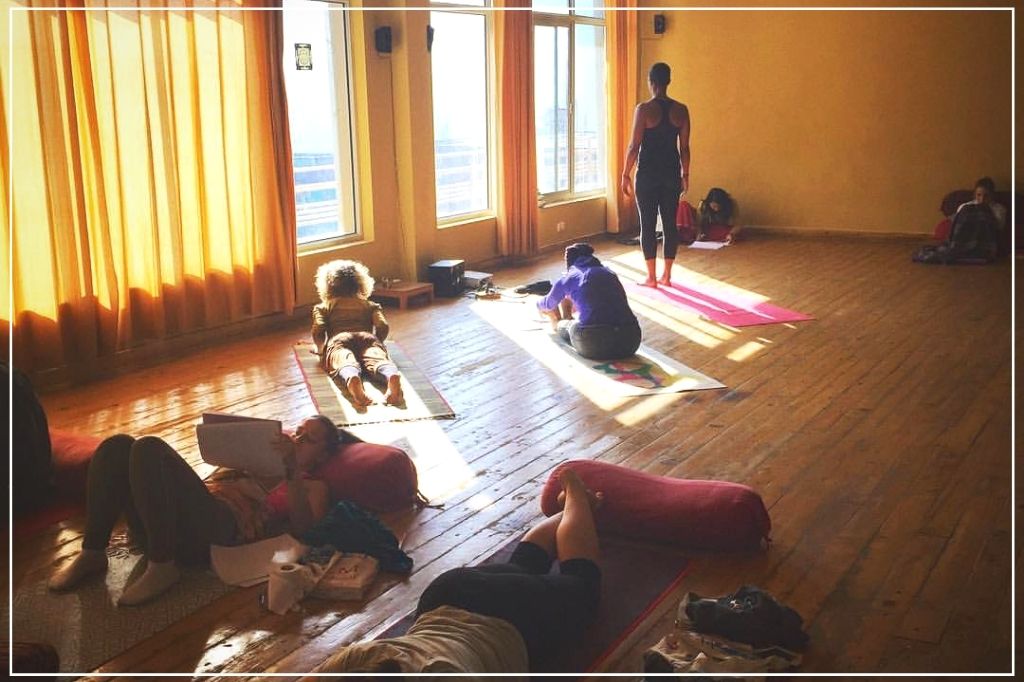
A FIVE MINUTES SAVASANA WITH… LEAH STARKEY – Q and A Session
Q and A Session with AYM Yoga School student – We recently sat down with LEAH STARKEY to get her thoughts on the Yoga and AYM Yoga School through her eyes. See what she had to say (Q&A session)
Q. WHY IS MEDITATION IMPORTANT IN MY LIFE?
A. I was raised Catholic in America. I never felt spiritually fed after going to the Church. When I left home at 18 for university, I tried finding a Catholic group/Community, and I thought I was wasting my time. I called my vows in an upset mind state after a very monotone prayer session, and she replied, “Well, maybe Catholicism isn’t for you.” I was shocked and relieved she said those words. I then moved to Japan, where I was introduced to the Karma Kagyu lineage of Tibetan Buddhism. For the first time, I was getting spirituality fed.
Meditation has taught me how to be a compassionate human being and the various ways an individual can do so. Meditation has allowed me to experience a brief moment of the grand spaciousness Samadhi provides us during this lifetime. Meditation is important because it shows the dinging patterns this mind/ego attaches to and how to see them and let go.
I then bring my meditation practice from the cushion into my daily life and work from the liberation I’ve learned and experienced on the pillow and in dharma classes; I have chosen to focus my career path towards using the body transcendence and freedom. Meditation is one of the tools that can help me do this.
Q. WHAT MY FIRST YOGA EXPERIENCE WAS LIKE?
A. I was in high school and was asked to go to a Yoga class at 24-Hour Fitness after a long, challenging track and field practice. I was a sprinter, so I was used to intense workouts. I went to the class thinking I was going for another exercise and remembered how hungry I was during the class. So, I had a big energy bar in my hand because I hadn’t eaten since noon.
It was around 4 p.m., and I was going from Uttanasana A into Urdha Vraksana, one arm above my head and the other feeding me the energy bar. I was not focusing and thought that Yoga was too slow, so I didn’t go again until about 6 or 7 years later.
The second class I attended was Hatha Yoga in Japan, taught by one of the Sangha members of my meditation group. This teacher helped me focus on my breath, not my posture. We opened with our hands in Namaste mudra and set our intention to focus on our breath.
There were only 5-8 people in the class, and most were relatively older than me. It was very low intensity, but I loved it and felt SO GOOD after. I regret not going more often, but I am here at AYM and emailing my teacher about this training.
Q. EXPLAIN PATANJALI’S 8 LIMBS.
A. The eight limbs of Patanjali are as follows: Yamma, Niyama, Asana, Pranayama, Pratyahara, Dharana, Dhyana, and Samadhi. Yamas are social codes of conduct that include ahimsa (non-violence), Satya (truth), Asteya (non-stealing), Brahmacharya (Celibacy), & Apargriha (non-hoarding). 8 limbs can only obtain them if you can’t be true unless you are loving and non-violent to others, but first yourself. Niyamas are a personal code of conduct that includes Shaucha (purification), Santosha (satisfaction), tapas (austerity), Svadhyaya (self-study), and Ishwar Prarthana (devoted to God).
Pranayama is the expansion of vital life force known to most as breathing exercises. Next is pratyahara, which is sense control, followed by Dharana, which focuses on the 7th Step is when the glorious practice of meditation comes from the method in which one can concentrate and eventually experience the 8th stage of meditation, Patanjali’s eight limbs, which is Samadhi. An expansive, spacious place where the mind and body can vast and experience non-clinging awareness.

Contact us to email us if you want more Q and A Sessions
Q. DESCRIBE THE DIFFERENCE BETWEEN HATHA AND ASHTANGA YOGA.
Hatha Yoga is an asana practice that has no particular sequence. You are free to do anything you can do any asana and hold it for however long you would like. Usually, people practice hatha yoga to prepare their bodies to warm up and sit comfortably for meditation. The translation of Hatha as Ha is “Sun,” and tha is “moon.” Ashtanga Yoga is quite different as it has its practice sequence, including specific opening and closing prayers. During Ashtanga, you are to use Ujjayi breath for inhalation and exhalation.
You start the practice with a primary series, with Surya Namaskara A (9 poses) and Surya Namaskara B (17 poses). You are to do each sequence five times each. Once you can practice the secondary series (which AYM students can learn during the 300 teacher training course), you can practice the advanced series. However, the advanced series becomes even more and more difficult throughout the advanced A, B, C, and D series. It is important to remember not to attempt advanced asanas until both series have been performedcorrectlyy and flexibly.
That’s the end of our Q&A session, and we hope you enjoyed it. Thank you very much for reading this Q&A Session with Leah Starkey!!
